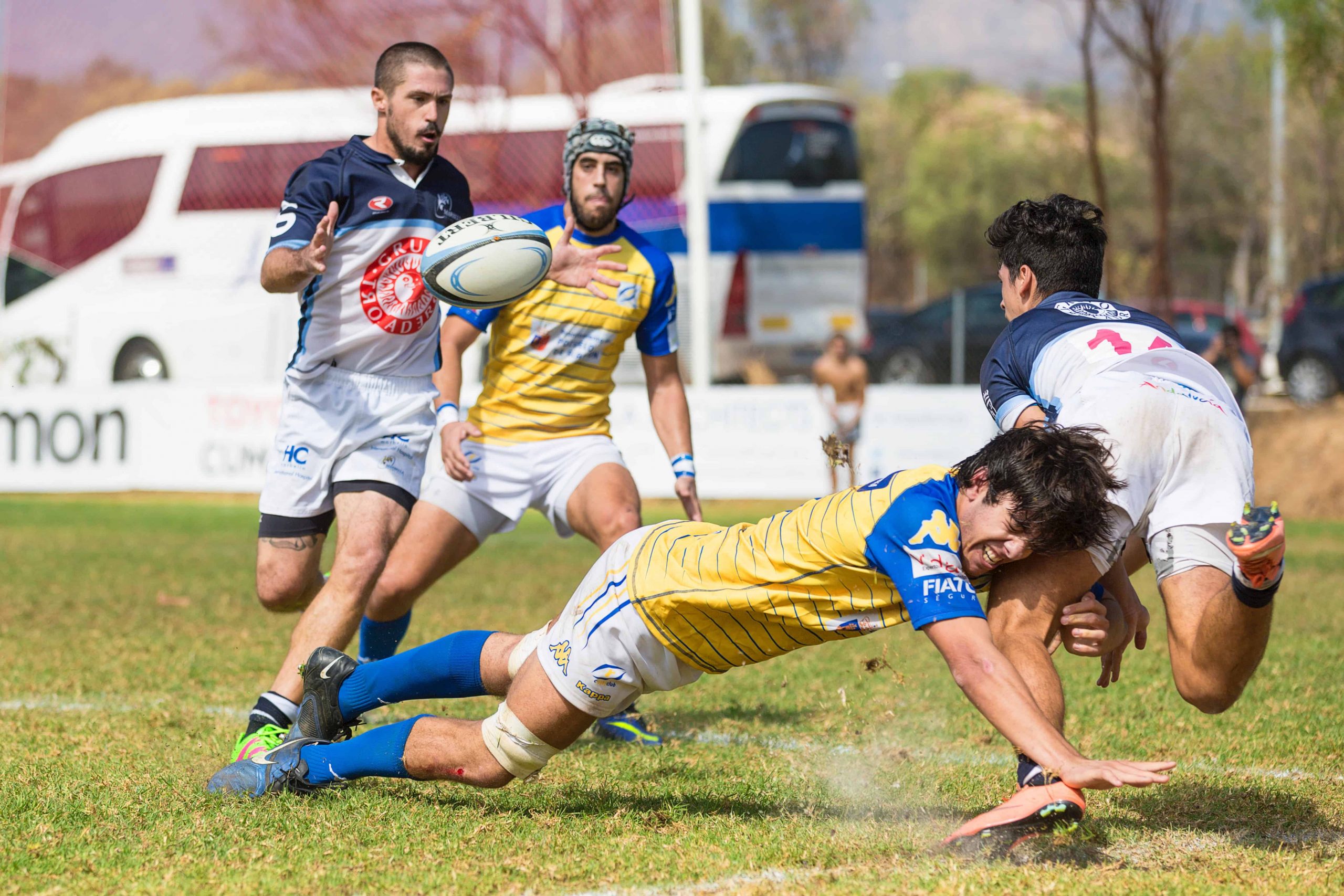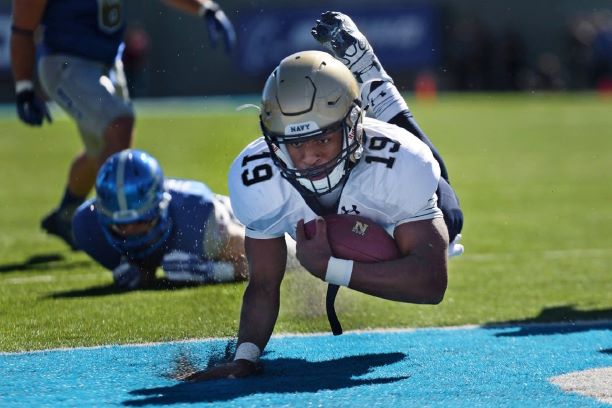The Bones We Break
Grade 9
Presentation
Problem
Question:
Which bones do children break the most often and what is the main cause?
Hypothesis:
If a child falls then they are susceptible to a bone fracture in the upper limb because the natural response to a fall is often to extend the hand.
Objective
The objective of this study is to find out
- Which bones do children fracture the most often?
- Neck and up
- Entire arm
- Entire Torso
- Entire leg
- Do most bone fractures occur as a result of a fall?
- What is our natural response to a fall?
- Are children who play sports more susceptible to bone fractures than those who don’t?
- Test the validity of the hypothesis
Method
Method
- Completed a literature review to collect background information on:
- What are the bones in the human body
- Is a bone fracture different from a bone break?
- What are the types of common youth bone fractures?
- What is our natural response to a fall?
- collecting four data sets from reputable sources in the literature to test the hypothesis
- Two procedures were used to test the hypothesis:
Procedure 1: Conducting a study which collects data using a survey questionnaire.
Procedure 2: By analyzing four data sets from reputable sources
- Procedure 1: Conducting a study which collects data using a survey questionnaire.
- The survey questionnaire focused on the following:
Whether a bone fracture happened between 0- 18 years old
The location of the bone fracture
Reason for the bone fracture
How could have avoided the bone fracture
- Selection of a sample size.
The questionnaire is sent out to a group of volunteers through social media, text messages and emails. There was no age limit or country restrictions for who could fill out the survey. No personal information was collected from the individuals. Responses were collected over two weeks.
- Information gathered through the responses to the survey questionnaire is converted into a data set.
- The data set from this study is reviewed and cleaned for quality control. The final data set included 303 entries.
- Data analysis using Microsoft Excel
- Derive conclusions
- Procedure 2: By analyzing four data sets from reputable sources
- Six data sets from reputable sources related to the topic are selected
- Select data that is applicable data for this study
- Analysis of the applicable data
- Compared the conclusions from Procedure 1 with Procedure 2
Research
Literature Review
What are the Bones in the Human Body?
- A total of 206 bones in an adult. At birth, there are 300 bones.
- There are five types of bones:
-
Flat Bones
- Protect internal organs like the brain, heart and pelvic organs
- Flat like a shield and sometimes has a curve
- Attachment for muscles
- The flat bones in your skull meet at joints called sutures, sutures can’t move but they will fuse. They don’t completely fuse until your growth is complete, typically around age 20. This allows your brain to grow and expand as an infant and child
-
Long Bones
- Bones that are longer than they are wide like the femur and fingers
- Hard and dense bones that can support the body's weight and enable movement
-
Short Bones
- Cube-shaped and contains spongy bones
- Found in the wrist and ankle
- Allow movement of the wrist and ankle
- Intended for strength, compactness, and motion
-
Irregular Bones
- Bones like vertebrae, the middle part of the pelvis (sacrum), and certain bones in the jaw area
- Serves various purposes:
- Protect nervous tissue (vertebrae)
-
Sesamoid Bones (Reinforce tendons)
Is a Bone Fracture Different from a Bone Break?
Bone fracture vs. Bone break
Bone fractures and broken bones mean the same thing and they are used interchangeably. A fracture is simply the medical term for a broken bone
Bone fracture vs. Bone Bruise
A bone bruise occurs when blood is trapped under the surface of the bone due to a forceful impact on the skin's surface and the bone does not crack. A bone fracture occurs when a force breaks or causes a crack in the bone, resulting in a more severe injury and longer healing time.
Bone fractures vs. Sprains
You can’t sprain a bone. A sprain happens when one of your ligaments is stretched or torn. Ligaments are fibrous tissue that connects bone to bone.
The Main Types of Youth Bone Fractures:
Fractures:
Greenstick Fracture
- Most broken fractures in children are greenstick fractures, this is because children's bones are more flexible than adult bones
- Almost all greenstick fractures happen in children under 10 because kids have softer and less brittle bones than adults.
- Greenstick fractures bones that bend so much that they crack but they don't break all the way and they don't break into pieces
- They are called greenstick because when you try and break a greenstick (a branch that is still alive, it is still flexible) you won’t be able to break it all the way through
- A greenstick fracture happens when there is enough energy to start a fracture but not enough energy to complete it
- Treated by immobilizing the fracture using a cast for about six weeks. If the crack is at a bad angle then surgery might be required
Image of cracked tree branch (left) and X-ray of greenstick fracture (right) - Symptoms of greenstick fracture:
- Pain
- Bruising
- Tenderness
- Swelling
- Part of the body looks more bent or twisted than usual
- Most common causes for greenstick fracture:
- Fall (especially onto an outstretched hand)
- Sports injuries
- Car accidents
- Who is most likely to get greenstick fracture:
- As said before; children under the age of 10. Because they have more flexible bones that are softer and more pliable than adult bones and because children fall more
- Children with vitamin D deficiency
- Ways to prevent greenstick fractures:
- Always wear a seatbelt
- Wear proper protective equipment when doing sports (wrist guards)
- Use proper tools (step stools to prevent falling)
Buckle (Torus) Fracture

- Very common in children like the greenstick fracture
- Frequently happens around the wrist
- When one side of the bone is compressed, the other side bends/buckle
- Almost always affects children. They are incomplete fractures meaning the break won't go all the way through the bone
- They are compression fractures meaning they are caused by sudden pressure/force to the area (like a fall) that causes the bones to bulge out of place
- Like a soda can being crushed
- It commonly happens on the ulna and radius, but can also occur on longer bones like; the femur, tibia, fibula, humerus
- Most commonly occur when children fall onto outstretched hands and are treated with a split or cast, very very rare for them to be treated with surgery.
- They are more common in children than in adults for the same reasons why greenstick fractures are more common in children
- It doesn’t happen on small bones like fingers or toes
- Very common: 1 in 4 children who break a bone receive buckle fracture and half of all wrist fractures are buckle fractures.
- Symptoms of buckle fractures:
- Pain
- Swelling
- Tenderness
- Bruising
- Bump in body that is not usually there
- Causes:
- When bones are compressed together with force
- For example; when A child falls onto an outstretched hand
- Long bones may bend without breaking the cortex. Children's bones can be bent to 45 degrees before the cortex is disrupted and a greenstick or a complete fracture occurs. However if the bending force is released the bone may only partially return to its pre-bent position, resulting in plastic bowing.
Hairline/Stress fracture
- Small cracks in the bone are typically caused over time by overuse. Mostly occurs on weight-bearing bones like leg bones.
- Overuse could be: jumping up and down repeatedly, running long distances, sports that involve running and jumping (basketball, gymnastics, dance, track and field, etc.)
What is our natural reflex to a fall?
According to Orthopedic experts, our natural reflex to a fall can be explained using FOOSH.
FOOSH is the shortened term for “fall on an outstretched hand.” It’s one of the most common injuries seen in the Emergency Department and can have a long-term effect on your fingers, hands, wrists, elbows or shoulders. The force of the impact between your hand and the surface you fall on is what creates FOOSH injuries. These can range from bruising to complete fractures.
Tumbles and falls can happen to anyone, at any age. From toddlers to the elderly, from those who are sedentary to professional athletes, our natural reflex to a fall is often to extend our hand.



Data
Procedure 1: Analysis of Data Gathered from My Questionnaire
6.1: Data
This is a screenshot showing the first several lines and the last several lines of the Excel spreadsheet of data gathered from my research questionnaire.
The graph below shows the breakdown of the data.
Procedure 2: Analysis of Data Gathered from Literature
5.1 Data set 1 (Italy Study)
Overview
A study from Italy using data from the outpatient clinic of the Department of Orthopedics and Traumatology of Santobono-Pausilipon Children Hospital in Naples, Italy
Data group: Children from 2 to 14 years old
Study period: 1 January 2008 to 30 June 2008
Number of participants: 382
Applicable Results
Fractures most frequently occurred in homes (41.6%), followed by playgrounds and footpaths (26.2%), sports facilities (18.3%), and educational facilities (13.9%), with gender differences existing only in adolescence.
The lifetime risk of sustaining a fracture in childhood is approximately 42%-64% in boys and 27%-40% in girls. (Average 43.25% between both genders)
Results interpretation
Bone Fracture vs No bone fracture: 43.25% vs 56.75%
Home vs. playground vs. Sport facilities vs education facilities: 41.6% vs 26.2% vs 18.3% vs 13.9 %
Bone broke during sport vs no sport= 41.6+13.9 vs 26.2+18.3
Assumption: Bone broke during sport including playground and sport facility data. Bone broke from no sports including Home and educational facilities.
Excel Screenshot:
Excel Screenshot:
Excel Screenshot:
5.2 Data set 2 (UK Study):
Overview
A study from the United Kingdom (UK) using data from the General Practice Research Database.
Data group: Children from 0 to 17 years old
Study period: 1988 to 1998
Number of participants: 84129 (52,624 boys and 31,505 girls) from 7000000 data records from app residence
Applicable Results
Results interpretation
Excel Screenshot:
Excel Screenshot:
5.3 Data set 3 (US Study):
Overview
The National Electronic Injury Surveillance System All Injury Program data 2005 through 2013 were accessed; 18 common sports and recreational activities in the United States were selected.
Data group: All ages including adults
Study period:2005-2013
Number of participants: 20,241,049 Emergency Department visits
Applicable Results
Results interpretation
- The greatest burden of fractures from common sports and recreational activities involved football and basketball.
- The most common fracture was in the finger followed by the wrist and forearm.
Excel Screenshot:
5.4 Data set 4 (Switzerland Study):
Overview
The National Electronic Injury Surveillance System All Injury Program data from 2005 through 2013 were accessed; 18 common sports and recreational activities in the United States were selected.
Data group: 7 to 15 years old
Study period: September 1999 to September 2000
Number of participants: 176 boys
Applicable Results
Results interpretation
Excel Screenshot:
5.5 Data set 5 (Ireland Study):
Overview
Collection of data of pediatric patients who presented with fractures to the orthopedic outpatient services of University Hospital Kerry, as well as patients admitted for inpatient treatment.
Data group: 0 to 18 years old
Study period: August 2015 to July 2016
Number of participants: 1022
Applicable Results
Results interpretation
Excel Screenshot:
Excel Screenshot:
Excel Screenshot:
5.6 Data Set 6 (Canada Study)
Overview
Government of Canada’s Open Government Data
Database:
Data group: 11 to 15 years
Study period:2002
Number of participants: Not known
Applicable Results
Bone Injury: Bone was broken, dislocated or out of joint (includes broken and/or chipped teeth:
Results interpretation
Excel Screenshot:
Conclusion
Main Conclusions:
- 38% (approximately 1 in 3) of the tested population had a bone fracture in their youth (0 to 18 years old).
- Majority (61%) of bone fractures occurred in the 01- 14 years age group.
- 70% of bone fractures happened when playing a sport.
- Majority (59%) of bone fractures are caused by a fall while playing a sport.
- Majority (56%) of bone fractures were in the upper limb which includes the hand.
- The hypothesis is justified by my questionnaire results.
- My questionnaire results align with the results found by analyzing literature data sets.
KEY FINDING
If you are someone between 10 to 14 years old who plays a sport, you have a higher chance of getting a bone fracture in your upper limb (i.e. hand, fingers, wrist, forearm) due to a fall.
Citations
Data Set Citations:
- Data Set 1: Italy Study - Valerio, G., Gallè, F., Mancusi, C., Di Onofrio, V., Colapietro, M., Guida, P., & Liguori, G. (2010, October). Pattern of fractures across pediatric age groups: analysis of individual and lifestyle factors. BMC Public Health, 10, 656. https://doi.org/10.1186/1471-2458-10-656
- Data Set 2: UK Study - Cooper, C., Dennison, E. M., Leufkens, H. G., Bishop, N., & van Staa, T. P. (2004, December). Epidemiology of childhood fractures in Britain: a study using the general practice research database. Journal of bone and mineral research: the official journal of the American Society for Bone and Mineral Research, 19(12), 1976–1981. https://doi.org/10.1359/JBMR.040902
- Data Set 3: US Study - Meixner, C., & Loder, R. T. (2020, March/April). The Demographics of Fractures and Dislocations Across the Entire United States Due to Common Sports and Recreational Activities. Sports Health, 12(2), 159–169. https://doi.org/10.1177/1941738119882930
- Data Set 4: Switzerland Study - Chevalley, T., Bonjour, J. P., van Rietbergen, B., Ferrari, S., & Rizzoli, R. (2011, October). Fractures during childhood and adolescence in healthy boys: relation with bone mass, microstructure, and strength. The Journal of clinical endocrinology and metabolism, 96(10), 3134–3142. https://doi.org/10.1210/jc.2011-1445
- Data Set 5: Ireland Study - Baig M. N. (2017). A Review of Epidemiological Distribution of Different Types of Fractures in Paediatric Age. Cureus, 9(8), e1624. https://doi.org/10.7759/cureus.1624
- Data Set 6: Canada Study - Health behaviour in school-aged children 2002, student response to the question: What were the main results of the most serious injury? (2010, March 30). https://www150.statcan.gc.ca/t1/tbl1/en/tv.action?pid=1310025401
All Other Citations:
- Broken arm - Symptoms and causes - Mayo Clinic. (2022, August 11). Mayo Clinic. https://www.mayoclinic.org/diseases-conditions/broken-arm/symptoms-causes/syc-20353260%C2%A0
- Sports Injury Statistics. (2019, November 19). Johns Hopkins Medicine. https://www.hopkinsmedicine.org/health/conditions-and-diseases/sports-injuries/sports-injury-statistics
- Common Sports Injuries: Incidence and Average Charges. (2014, March 16). ASPE. https://aspe.hhs.gov/reports/common-sports-injuries-incidence-average-charges-0
- Bones. (n.d.). Better Health Channel. https://www.betterhealth.vic.gov.au/health/conditionsandtreatments/bones
- Gallagher, C. (2014, January 14). Childhood Fractures May Indicate Bone-Density Problems. Mayo Clinic News Network. https://newsnetwork.mayoclinic.org/discussion/childhood-fractures-may-indicate-bone-density-problems
- Professional, C. C. M. (n.d.). Bone Fractures. Cleveland Clinic. https://my.clevelandclinic.org/health/diseases/15241-bone-fractures
- Emt-P, R. B. (2023, May 14). What’s the Difference Between a Bone Fracture and a Break? Verywell Health. https://www.verywellhealth.com/whats-the-difference-between-a-fracture-and-a-break-1298211
- Types of Bone | Biology for Majors II. (n.d.). https://courses.lumenlearning.com/wm-biology2/chapter/types-of-bone/
- Short bones. (n.d.). Mount Sinai Health System. https://www.mountsinai.org/health-library/special-topic/short-bones
- Body, V. (n.d.). Types of Bones | Learn Skeleton Anatomy. https://www.visiblebody.com/learn/skeleton/types-of-bones.
- Long Bones. (n.d.). Mount Sinai. https://www.mountsinai.org/health-library/special-topic/long-bones
- Biga, L. M., Bronson, S., Dawson, S., Harwell, A., Hopkins, R., Kaufmann, J., LeMaster, M., Matern, P., Morrison-Graham, K., Oja, K., Quick, D., Runyeon, J., Oeru, O., & O. (2019, September 26). 6.2 Bone Classification. Pressbooks. https://open.oregonstate.education/aandp/chapter/6-2-bone-classification/
- Fractures in Children | Boston Children’s Hospital. (n.d.). https://www.childrenshospital.org/conditions/fractures#:~:text=Stress%20fractures%20(hairline%20fractures)%3A,participate%20in%20gymnastics%20or%20dance
- Muacevic, & Adler. (2017, August 9). A Review of Epidemiological Distribution of Different Types of Fractures in Paediatric Age. National Library of Medicine .https://www.ncbi.nlm.nih.gov/pmc/articles/PMC5659318/#:~:text=Up%20to%20the%20age%20of,patients%20in%20this%20age%20group
- Scaphoid fracture: symptoms & treatment. (n.d.). Adelaide & Hills HAND THERAPY. https://www.ahhot.com.au/blog/scaphoid-fracture-symptoms-treatment
- B. (2023, July 19). Bent Out of Shape - Limitless Physical Therapy. Limitless Physical Therapy. https://limitlessphysicaltherapy.com/2019/07/29/bent-out-of-shape/
- Different Types Of Wrist Fractures? (2020, April 24). The Bone & Joint Center. https://www.bone-joint.com/different-types-of-wrist-fractures/
- Wrist injuries | informedhealth.org. (n.d.). informedhealth.org. https://www.informedhealth.org/wrist-injuries.html
- Kids Health Information : Fractures (broken bones). (n.d.). https://www.rch.org.au/kidsinfo/fact_sheets/Fractures_broken_bones/
- Bone Fractures in Children: When Should Parents Be Concerned? (n.d.). https://www.nationwidechildrens.org/family-resources-education/700childrens/2018/04/bone-fractures-in-children-when-should-parents-be-concerned
- Tocco, C. (2020, March 11). Why We Should Teach Athletes How to Fall. SimpliFaster. https://simplifaster.com/articles/why-teach-athletes-to-fall/
- Skull fracture. (n.d.). Mount Sinai Health System. https://www.mountsinai.org/health-library/injury/skull-fracture
- Fernandez, R. G. (2023, January 1). Biomechanics of Bone Trauma. Elsevier eBooks. https://doi.org/10.1016/b978-0-12-823677-2.00124-0
- Fractures & Trauma - Sparta. (n.d.). Mayo Clinic Health System. https://www.mayoclinichealthsystem.org/locations/sparta/services-and-treatments/orthopedic-surgery/conditions-and-treatments/fracture-care-and-trauma
- Types of Pediatric Fractures. (n.d.). Children’s Mercy Kansas City. https://www.childrensmercy.org/departments-and-clinics/orthopedics/fracture-care/types-of-pediatric-fractures/
- Fracture Education : Biomechanical differences between adult and child. (n.d.). https://www.rch.org.au/fracture-education/biomechanics/biomechanical_differences_between_adult_and_child/.
- Professional, C. C. M. (n.d.). Greenstick Fractures. Cleveland Clinic. https://my.clevelandclinic.org/health/diseases/17812-greenstick-fractures
- Professional, C. C. M. (n.d.). Buckle Fracture (Impacted Fracture). Cleveland Clinic. https://my.clevelandclinic.org/health/diseases/22235-buckle-fracture
Acknowledgement
Thank you to all the participants who filled out my questionnaire and those who shared the questionnaire with others as well. I would also like to acknowledge the authors and researchers of the literature data sets I used and my school science fair coordinator Ms. Rheinstein. A final huge thank you to my parents and my brother for all their support and guidance through this project, without them, I truly would not have been able to do this.

